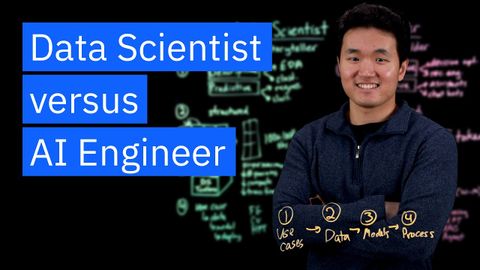數據科學家與人工智能工程師 (Data Scientist vs. AI Engineer)
松崎洋介 發佈於 2024 年 09 月 06 日  沒有此條件下的單字
沒有此條件下的單字- adj.巨大的;大而重的;大量的;厚重的;大規模的
US /ˈprɑsˌɛs, ˈproˌsɛs/
・
UK /prə'ses/
- v.t.用電腦處理(資料);(依照規定程序)處理;處理;流程;加工;理解
- n. (c./u.)(規定的)程序;過程;進程;方法;法律程序;進程
US /tɛkˈnik/
・
UK /tekˈni:k/
- n. (c./u.)技術;工藝;技能;(藝術)技巧
- n. (c./u.)大小;規模;魚鱗;比例;等級;標尺
- v.t./i.測量;攀登;魚鱗
